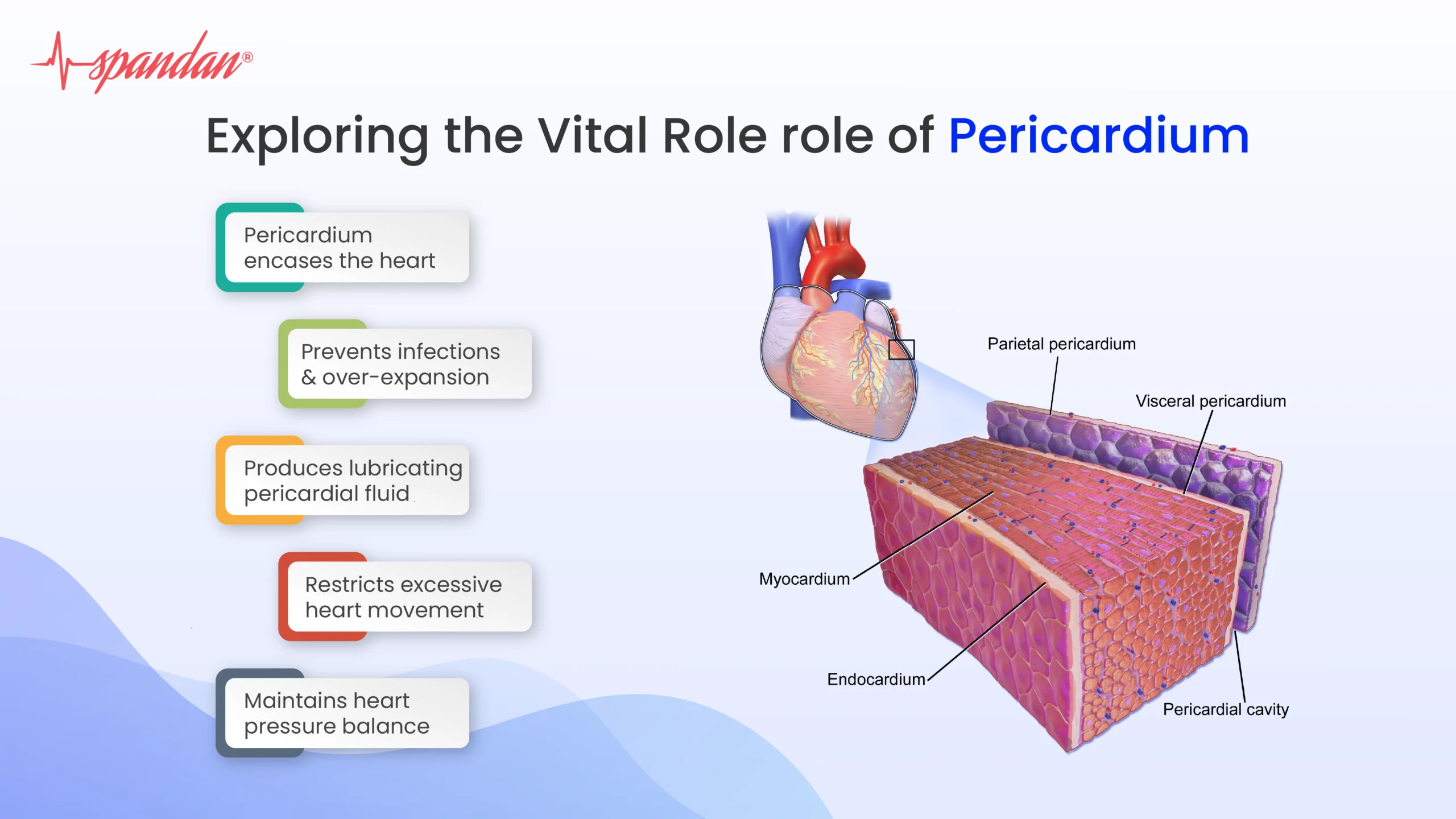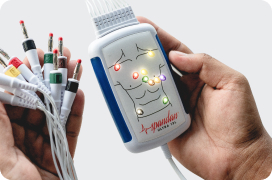
Author:- Mr. Ritesh Sharma
It goes without saying that the heart is the most essential organ in the human body. However, did you ever think of the protective casing that takes care of the heart? No, right? The pericardium is the sac that works like a protective casing for the human heart. It ensures that the circulatory system works seamlessly by working with organs like the septum that prevent the mixing of oxygenated and deoxygenated blood during circulation and valves that prevent the backflow of blood in the heart in harmony.
The pericardium has a multitude of roles to play in the body. Circulation is only a single example, but no function of the human heart would be possible without the presence of the pericardium. It is an under-talked face of the human heart that needs more discussion among healthcare enthusiasts and clinicians. Therefore, this blog will do the needful for you.
Here, we will discuss all facets of this protective layer of the heart- pericardium. We will talk about how the pericardium plays a vital role in all functions of the heart. Furthermore, we will discuss pericardial conditions and their clinical implications. So, by the end of this blog, you will be educated about this under-discussed aspect of heart health entirely.
What is the Pericardium?
The pericardium is a double-walled sac that encases the heart and the roots of the great vessels, consisting of two main layers:
Fibrous Pericardium: This tough, outer layer is composed of dense connective tissue. It anchors the heart to surrounding structures like the diaphragm and sternum, preventing excessive movement during bodily activities.
Serous Pericardium: This inner layer is divided into two sub-layers:
- Parietal Layer: Lines the inner surface of the fibrous pericardium.
- Visceral Layer (Epicardium): Directly covers the heart muscle.
Between these two sub-layers is the pericardial cavity, which contains a small amount of lubricating fluid that reduces friction as the heart beats.
Functions of the Pericardium
There are more functions of the pericardium than you would imagine. It helps in numerous activities of the heart, ensuring that the harmony between the heart and other organs of the human body remains undisturbed. The following is a list of all the functions of the pericardium:
1. Protection and Support
The primary function of the pericardium is to protect the heart. The fibrous pericardium acts as a mechanical barrier against infections from adjacent organs and tissues. Additionally, it prevents the heart from over-expanding when blood volume increases, maintaining optimal cardiac function and efficiency.
2. Lubrication
The serous pericardium produces pericardial fluid, which fills the pericardial cavity. This fluid reduces friction between the heart and surrounding structures, allowing smooth, uninhibited cardiac movements. This lubrication is crucial for preventing wear and tear on the heart as it contracts and relaxes.
3. Restriction of Excessive Motion
By anchoring the heart to the diaphragm, sternum, and surrounding tissues, the fibrous pericardium restricts excessive movement. This stabilization ensures that the heart remains in a relatively constant position, which is vital for maintaining efficient blood flow and preventing potential displacement or twisting that could impair function.
4. Pressure Maintenance
The pericardium helps maintain the pressure environment around the heart, which is essential for proper cardiac filling and function. The balance of pressure within the pericardial cavity ensures that the heart chambers can fill with blood efficiently during diastole and eject blood effectively during systole.
5. Defense Mechanism
The pericardium serves as a defense mechanism by isolating the heart from potential infections. The fibrous layer acts as a physical barrier, while the pericardial fluid can dilute and neutralize harmful substances, reducing the risk of infection spreading to the heart.
Pericardial Conditions and Their Implications
Despite its protective role, the pericardium is not immune to disease. Several conditions can affect it, leading to significant health issues.
- Pericarditis: Pericarditis is the inflammation of the pericardium, often caused by infections (viral, bacterial, or fungal), autoimmune disorders, or trauma. Symptoms include sharp chest pain that worsens with breathing or lying down, fever, and palpitations. If left untreated, pericarditis can lead to complications like cardiac tamponade and chronic constrictive pericarditis.
- Cardiac Tamponade: Cardiac Tamponade is a life-threatening condition where fluid accumulates rapidly in the pericardial cavity, increasing pressure on the heart. This pressure prevents the heart from filling properly, leading to a dramatic drop in blood pressure and cardiac output. Immediate medical intervention, often involving pericardiocentesis (removal of excess fluid), is crucial to prevent fatal outcomes.
- Constrictive Pericarditis: Constrictive pericarditis is a chronic condition where the pericardium becomes thickened and scarred, losing its elasticity. This constriction restricts the heart’s ability to expand fully, leading to symptoms of heart failure such as swelling of the legs, fatigue, and shortness of breath. Treatment may involve anti-inflammatory medications or surgical removal of the pericardium (pericardiectomy).
- Pericardial Effusion: Pericardial effusion is the accumulation of excess fluid in the pericardial cavity. Causes include inflammation, trauma, cancer, or kidney failure. Small effusions may be asymptomatic, while larger ones can cause chest pain, difficulty breathing, and reduced heart sounds on examination. Treatment depends on the underlying cause and severity, ranging from monitoring to draining the fluid.
In conclusion, the pericardium, though often overshadowed by the heart it protects, plays a critical role in maintaining cardiovascular health. Its functions, ranging from physical protection and lubrication to pressure maintenance and infection defense, are vital for the heart’s efficient operation. Understanding the importance of the pericardium and recognizing the symptoms of pericardial diseases can lead to early diagnosis and effective treatment, ultimately preserving heart health and enhancing quality of life.





